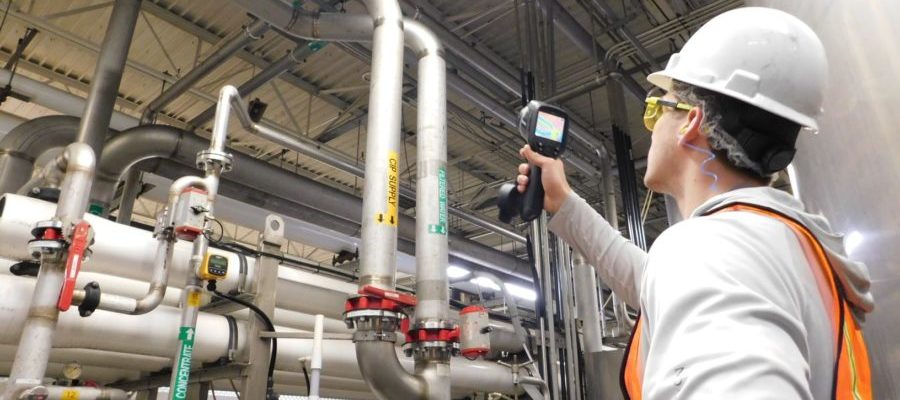
The Need
In 2015, a large beverage bottling plant in northeastern Pennsylvania planned to reduce its overall water usage by 25% over a ten-year period, ending in 2025. The plant’s goal was to increase profitability while reducing energy and environmental costs.
Based on the United Nation’s Sustainable Development Goals (SDGs), the plant also identified six focus areas for improvement: agriculture, water, packaging, product, climate, and people. These were considered during PennTAP’s assessment.
The PennTAP Connection
The facility began working with PennTAP advisors who focused their assessment on reducing the amount of water wasted at the facility.
They worked in collaboration with the Northeastern Pennsylvania Industrial Resource Center (NEPIRC) to review all aspects of one bottling line in a value stream mapping (VSM) exercise as part of an Economy, Energy, and Environment (E3) assessment.
VSM is a lean manufacturing tool designed to combine material processing steps with information flow. It helps users create a solid implementation plan that maximizes their available resources and ensures time and materials are used efficiently.
The Project
PennTAP first evaluated the plant’s water usage in every step of the 45-minute automated process to fill a bottle, which consists of the following steps: purification, batching, filling, pasteurizing, labeling, packing and palletizing.
Since the beverage product is mostly water, the water purification step is one of the most important in the process, and it requires sending a significant amount of water to the wastewater treatment system.
The bottling plant uses a reverse osmosis machine during the purification step to remove any contaminants from the water source. The machine recovers water at a rate of 80%, and the remaining 20% is concentrated with contaminants and sent to the wastewater treatment system. This waste (known as effluent) represents a significant amount of the water purchased by the plant.
Per PennTAP’s recommendation, the site installed a new reverse osmosis machine that is better sized for production levels and has greatly reduced the effluent from 20% to 11%. This also reduced the amount of water the plant needed to purchase.
In addition, PennTAP helped the site reduce the product yield loss by 20%. The product yield loss includes loss between the filler and the palletizer at the site. The main sources of loss include overfilling at the fillers, mislabeling, quality rejects, and metal detection in product. The loss of product also includes product being sent as wastewater or thrown in the trash. The bottler has plans to get a filler machine upgrade in 2021 to achieve even greater results.
PennTAP advisors also brought students from Penn State’s College of Earth and Mineral Sciences on site. The energy engineering students completed a site assessment of the bottling plant’s natural gas usage.
The Outcome
PennTAP advisors estimated the savings for the replacement of the reverse osmosis machine to be 12,010,781 gallons of water and wastewater per year, with the cost savings being $85,132 in water costs and $75,065 in wastewater costs. These represent savings of approximately 7% for the site’s total cost for water and wastewater.
The savings for reducing the product yield loss were estimated to be 640,575 gallons of water, equivalent to $4,540 in water cost savings and $3,843 in wastewater savings.
PennTAP continues to support this beverage bottling plant with projects and plans to help the bottling plant pursue potential ideas for the Penn State Bernard M. Gordon Learning Factory senior engineering capstone design projects in the future.
This project was funded in part by the United States Environmental Protection Agency (EPA).
PennTAP Contact
Phone: (814) 865-0427
Email: penntap@psu.edu

